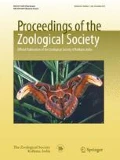Abstract
Poly-(dimethylsiloxane) (PDMS) is extensively used in edible fats and oils as an antifoaming agent. However, in vitro cyto-genotoxicity analyses of PDMS in primary human cells are limited. The present study was performed as a safety assessment encompassing the cytotoxicity and genotoxicity of PDMS on human peripheral blood lymphocytes. Isolated lymphocytes were exposed to different concentrations of PDMS from 0 to 20 mg/l at 37 °C for up to 24 h. Our results suggest a significant dose-dependent decline in cell viability at concentrations 2.5 mg/l and above as estimated by trypan blue dye exclusion test and MTT assay. The IC-50 of PDMS was found to be 20 mg/l after 24 h incubation. Moreover, a significant genotoxicity were observed at 2.5 mg/l and above as assessed by comet and DNA diffusion assays. Hence, consumption of PDMS may not be safe at concentrations above 2.5 mg/l. Further studies are needed to establish its in vivo cyto-genotoxicity mechanisms.


Abbreviations
- PDMS:
-
Poly(dimethylsiloxane)
References
Aufan, M.R., Y. Sumi, S. Kim, and J.Y. Lee. 2015. Facile synthesis of conductive polypyrrole wrinkle topographies on polydimethylsiloxane via a swelling–deswelling process and their potential uses in tissue engineering. ACS Applied Materials & Interfaces 7: 23454–23463.
Boyum, A. 1976. Isolation of lymphocytes, granulocytes and macrophages. Scandinavian Journal of Immunology 5: 9–15.
Gupta, V. 2017. The Food Safety and Standards Act, 2006. (9th ed.). Delhi: Commercial Law Publishers (India) Pvt. Ltd., p. 641.
Halldorsson, S., E. Lucumi, R. Gómez-Sjöberg, and R.M. Fleming. 2015. Advantages and challenges of microfluidic cell culture in polydimethylsiloxane devices. Biosensors & Bioelectronics 63: 218–231.
Henderson, L., E. Jones, T. Brooks, A. Chetelat, P. Ciliutti, M. Freemantle, C.A. Howard, J. Mackay, B. Phillips, S. Riley, C. Roberts, A.K. Wotton, and E.J. van de Waart. 1997. Industrial genotoxicology group collaborative trial to investigate cell cycle parameters in human lymphocyte cytogenetic studies. Mutagenesis 12: 163–167.
Henriksen, C., S. Hansen, I. Nordgaard-Lassen, J.R. Anderson, and P. Madsen. 2010. Possible interactions between dietary fibres and 5-aminosalicylic acid. Therapeutic Advances in Gastroenterology 3: 5–9.
Hevia, O. 2009. Six-year experience using 1000-centistoke silicone oil in 916 patients for soft-tissue augmentation in a private practice setting. Dermatologic Surgery 35: 1646–1652.
Isquith, A., D. Matheson, and R. Slesinski. 1988. Genotoxicity studies on selected organosilicon compounds: In vivo assays. Food and Chemical Toxicology 26: 263–266.
Lixia, Z.E., L.C. Joel, and H. Whitney. 2012. Granulomatous reaction to silicone injection. The Journal of Clinical and Aesthetic Dermatology 5: 44–47.
Márquez-Ruiz, G., J. Velasco, and M.C. Dobarganes. 2004. Effectiveness of dimethylpolysiloxane during deep frying. European Journal of Lipid Science and Technology 106: 752–758.
Mosmann, T. 1983. Rapid colorimetric assay for cellular growth and survival: Application to proliferation and cytotoxicity assays. Journal of Immunological Methods 65: 55–63.
Nair, B. 2003. Final report on the safety assessment of stearoxy dimethicone, dimethicone, methicone, amino bispropyl dimethicone, aminopropyl dimethicone, amodimethicone, amodimethicone hydroxystearate, behenoxy dimethicone, C24–28 alkyl methicone, C30–45 alkyl methicone, C30–45 alkyl dimethicone, cetearyl methicone, cetyl dimethicone, dimethoxysilyl ethylenediaminopropyl dimethicone, hexyl methicone, hydroxypropyldimethicone, stearamidopropyl dimethicone, stearyl dimethicone, stearyl methicone, and vinyldimethicone. International Journal of Toxicology 22: 11–35.
Nendza, M. 2007. Hazard assessment of silicone oils (polydimethylsiloxanes, PDMS) used in antifouling-/foul-release-products in the marine environment. Marine Pollution Bulletin 54: 1190–1196.
Schwartzfarb, E.M., J.M. Hametti, P. Romanelli, and C. Ricotti. 2008. Foreign body granuloma formation secondary to silicone injection. Dermatology Online Journal 14: 20.
Singh, N.P., M.T. McCoy, R.R. Tice, and E.L. Schneider. 1988. A simple technique for quantitation of low levels of DNA damage in individual cells. Experimental Cell Research 17: 184–191.
Tennant, J.R. 1964. Evaluation of the trypan blue technique for determination of cell viability. Transplantation 2: 685–694.
Tice, R.R., E. Agurell, D. Anderson, B. Burlinson, A. Hartmann, H. Kobayashi, Y. Miyamae, E. Rojas, J.C. Ryu, and Y.F. Sasaki. 2000. Single cell gel/comet assay: Guidelines for in vitro and in vivo genetic toxicology testing. Environmental and Molecular Mutagenesis 35: 206–221.
Tiwari, A., and M.D. Soucek. 2014. Concise Encyclopedia of High Performance Silicones, (1st ed) Chapter: Safety and toxicity aspects of polysiloxanes (silicones) applications, Wiley-Scrivener Publishers, USA (In print).
Yawata, M., T. Satoh, M. Iwahashi, R. Hori, S. Takeuchi, H. Shiramasa, and N. Totani. 2015. The antioxidation mechanism of polydimethylsiloxane in oil. Journal of Oleo Science 64: 853–859.
Acknowledgements
All authors have read and approved the manuscript and are aware of its submission to ‘Proceedings of the Zoological Society’. The authors acknowledge the PURSE (Promotion of University Research and Scientific Excellence) program of the Department of Science and Technology, Government of India, for financial support.
Author information
Authors and Affiliations
Corresponding author
Ethics declarations
Conflict of interest
The authors declare that they have no conflict of interest.
Rights and permissions
About this article
Cite this article
Chakrabarti, A., Ghosh, I. & Mukherjee, A. Poly(dimethylsiloxane) Induces Cytotoxicity and Genotoxicity in Human Lymphocytes. Proc Zool Soc 73, 82–85 (2020). https://doi.org/10.1007/s12595-018-0285-8
Received:
Revised:
Accepted:
Published:
Issue Date:
DOI: https://doi.org/10.1007/s12595-018-0285-8

